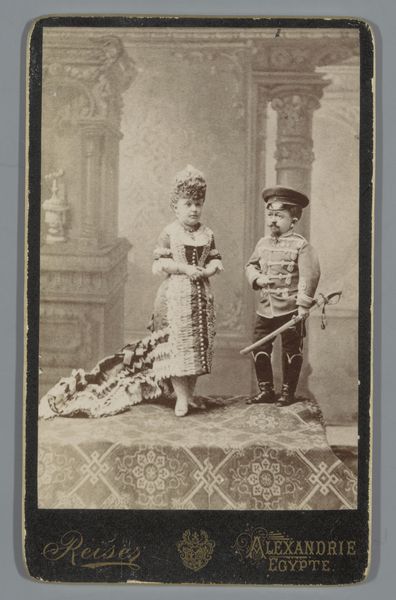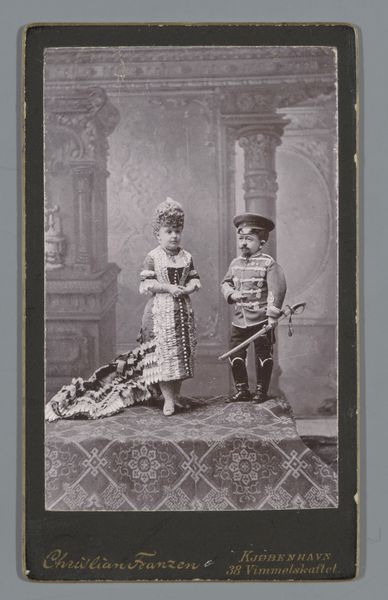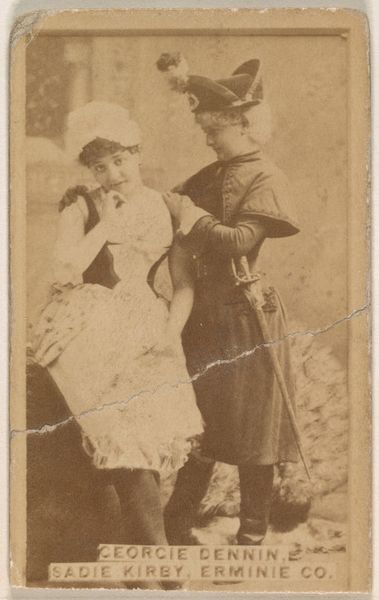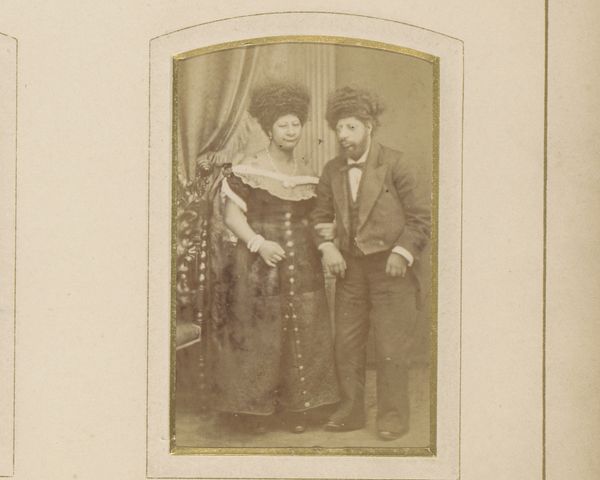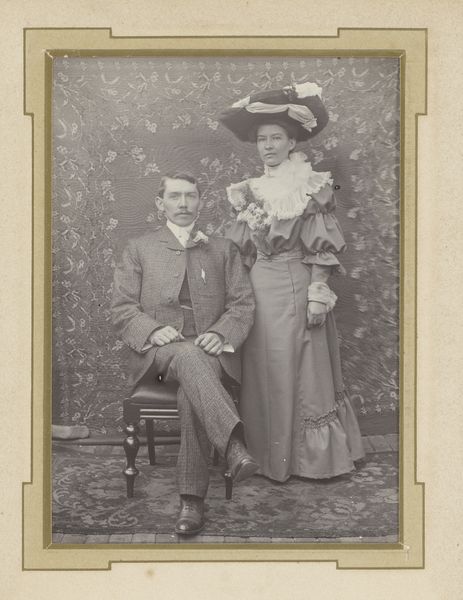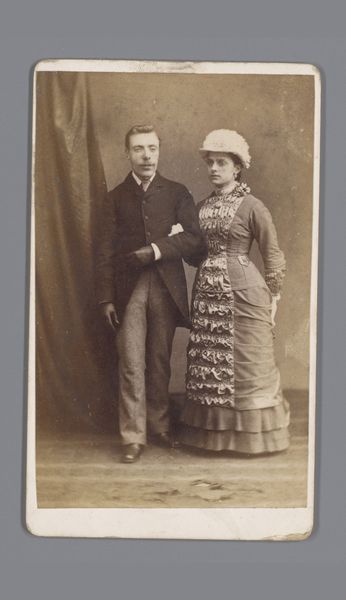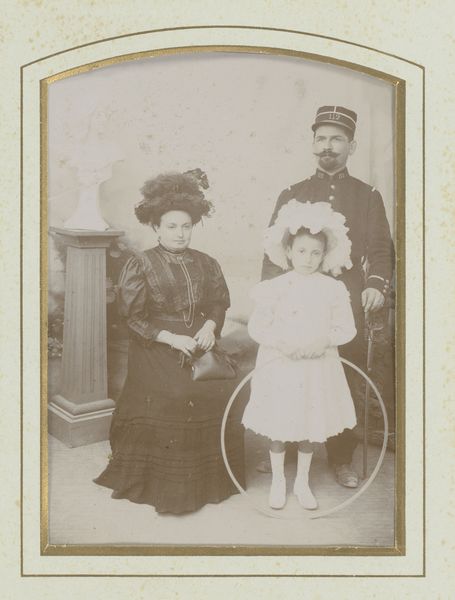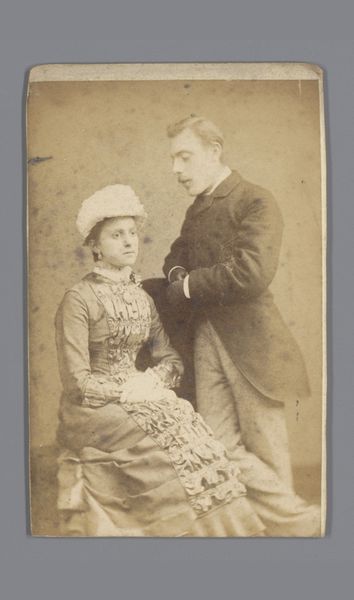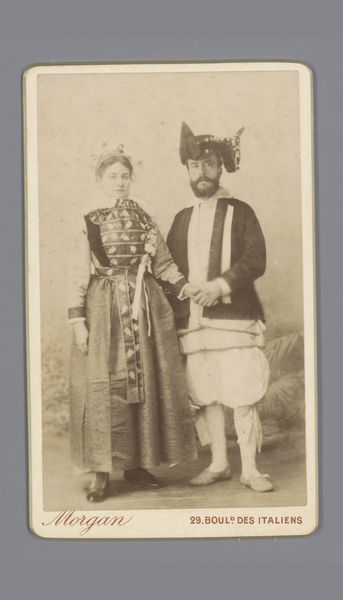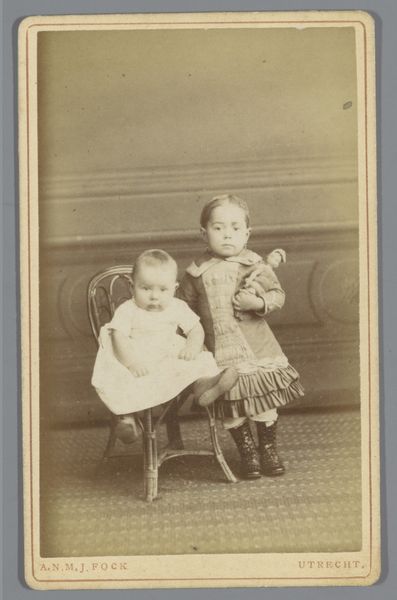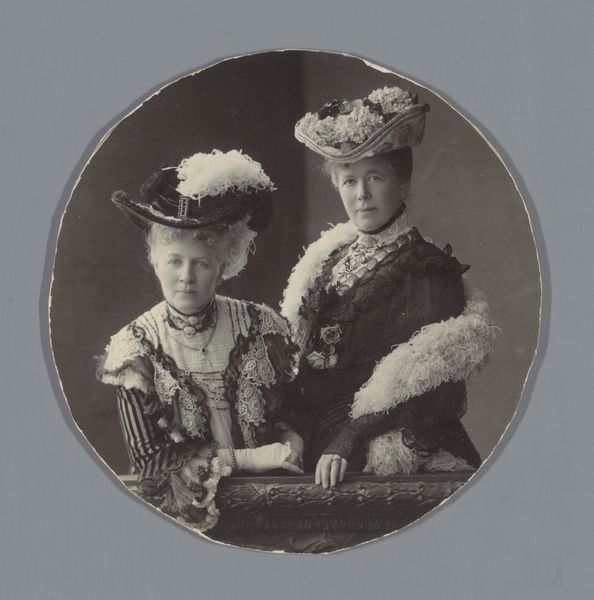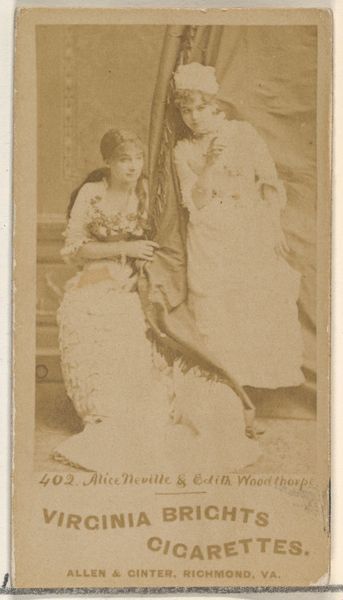
daguerreotype, photography
#
daguerreotype
#
photography
#
genre-painting
Dimensions: height 105 mm, width 62 mm
Copyright: Rijks Museum: Open Domain
Editor: This is an undated daguerreotype portrait by Rafael Areñas, created sometime between 1850 and 1900. It depicts a young, unknown, couple. There's something unsettling about seeing these children dressed as adults. How do you interpret the social commentary within this genre painting? Curator: It's fascinating, isn't it? This image serves as a window into 19th-century societal norms, expectations, and the performance of identity. Think about the power dynamics inherent in the act of portraiture itself – who had access, who was being represented, and how? Editor: It does feel like the kids are trapped into their roles. Curator: Exactly! Look at the staging – the ornate backdrop and props. They're playing roles thrust upon them, mirroring societal aspirations and perhaps even anxieties surrounding class and status. The elaborate costumes and their serious expressions invite us to consider gender and performance. Editor: It's almost as if they’re tools for some social or political message. What does the sword and hat say about the little boy? Curator: Precisely. And how might these performative aspects intersect with issues of child labor, innocence, and the expectations placed on young people in this era? The rigid poses also convey a sense of constraint. It's as though their childhoods are being mediated, constructed through the lens of adult expectations. Consider whether that construction still exists today in terms of kids’ portrayal on media, reality show, advertisement, etc. Editor: This image now makes me consider all the cultural weight placed upon them as kids and how children are manipulated into adult things in today's society. Curator: Indeed. By analyzing these historical portraits through a contemporary lens, we can begin to unpack the complexities of representation and challenge assumptions about the past. Editor: Thank you for opening my eyes to all of that, really changed how I see the piece.
Comments
No comments
Be the first to comment and join the conversation on the ultimate creative platform.
